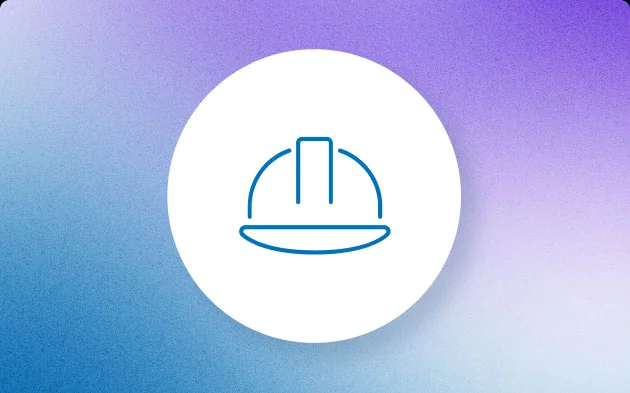Maximizing CMMS efficiency through API integration
Seamless data sharing between a CMMS and other software improves maintenance accuracy and efficiency, enabling streamlined workflows and informed decision-making.

Computerized Maintenance Management Systems (CMMS) are crucial for tracking maintenance tasks, assets, and inventory. It helps organizations streamline maintenance processes, schedule tasks, monitor equipment performance, and optimize resource allocation, ultimately enhancing operational efficiency and prolonging the lifespan of assets. By adding Application Programming Interfaces (APIs), CMMS becomes even more powerful, making maintenance operations smoother and more efficient.
What is an API?
An API is a set of rules, protocols, and tools that allows different software applications to communicate with each other. It defines the methods and data structures that developers can use to interact with a software component, service, or platform without needing to understand the underlying implementation details.
In recent years, APIs have become a fundamental building block of modern software development, powering everything from web applications and mobile apps to IoT devices and cloud services. They enable developers to create applications that can leverage the functionality of other services, libraries, or systems.
As we step into the future, APIs will become even more versatile. They won't just connect software, but also link together new technologies like AI, decentralized networks, and virtual reality. This will allow developers to come up with innovations, inspiring a new wave of possibilities and shaping business operations in remarkable ways.
Using APIs with CMMS
Integrating APIs with a CMMS seamlessly links it to other organizational software, ensuring rapid and accurate data transmission. This minimizes manual data entry, enhancing maintenance monitoring, work order scheduling, and resource utilization efficiency. Here’s how:
CMMS and BAS integration
The integration of CMMS and Building Automation Systems (BAS) allows it to access information about heating, cooling, lighting, and security systems (HVAC) in a facility. This enables the CMMS to proactively plan their maintenance based on real-time data. For example, the CMMS can respond promptly to alerts about HVAC filter replacements or security camera maintenance. This proactive approach helps conserve energy, extend equipment lifespan, and enhance building safety.
CMMS and ERP systems integration
Integrating CMMS with Enterprise Resource Planning (ERP) systems automates the exchange of maintenance-related data between the two systems. When a maintenance task is completed, the CMMS can swiftly send relevant data to the ERP system, aiding in accurate inventory management, precise labor cost calculation, and efficient work order closure. This integration enhances financial reporting accuracy, reduces manual data entry, and streamlines maintenance workflows.
CMMS and IoT integration
Connecting CMMS with Internet of Things (IoT) devices allows real-time access to equipment performance, usage patterns, and overall condition. When IoT sensors detect anomalies in equipment operation, the CMMS can generate corrective actions before issues escalate. This proactive approach results in prolonged equipment uptime, decreased maintenance costs, and extended equipment lifespan, contributing to operational continuity and cost-effectiveness.
Benefits of using APIs with CMMS
Enhanced data accuracy: By employing APIs to facilitate data exchange between various systems, the likelihood of errors is minimized. Information is input just once and seamlessly shared across systems, thereby boosting data accuracy and eliminating the need for manual data entry.
Higher data transparency: Through APIs, organizations gain granular visibility into their maintenance operations, including the health of assets, equipment performance, and inventory. This empowers organizations to make more informed choices concerning maintenance undertakings, allocation of resources, and equipment replacement.
Increased operational efficiency: The real-time transfer of data via APIs elevates the efficiency of maintenance operations. This capability enables organizations to expedite maintenance tasks, leading to reduced downtime.
Maintenance cost optimization: Enhanced efficiency resulting from APIs translates into decreased maintenance costs, prolonging the lifespan of equipment and reducing downtime. By integrating CMMS with other systems, organizations can streamline maintenance workflows, optimize resource allocation, and bring down unplanned repairs. This cumulative effect contributes to cost savings in overall maintenance expenditures over time.
Enhanced decision-making: APIs, with their improved data visibility and real-time information, empower organizations to make more accurate decisions pertaining to maintenance initiatives, distribution of resources, and equipment substitution. Organizations can pinpoint trends, predict equipment malfunctions, and strategize maintenance activities more effectively. This proactive approach leads to heightened equipment uptime, decreased maintenance expenses, and an overall enhancement in maintenance efficacy.
Fostering maintenance innovation with Eagle CMMS
Eagle CMMS stands at the forefront of technological innovation, dedicated to enhancing facility maintenance through advanced software solutions. Our robust CMMS offering introduces configurability and adaptability that perfectly align with your organizational needs. Integrating platform APIs into our suite of tools allows seamless connection with your internal software, providing complete visibility of operational data. This synergy between our CMMS and APIs extends benefits to organizations of all scales, enhancing data precision, streamlining efficiency, augmenting visibility, curbing maintenance expenses, and facilitating superior decision-making regarding maintenance endeavors.
Experience a new era of facility maintenance with Eagle CMMS — where innovation meets efficiency, and technology empowers excellence. Join us in shaping the future of maintenance management, one efficient operation at a time. Request a demo now.












